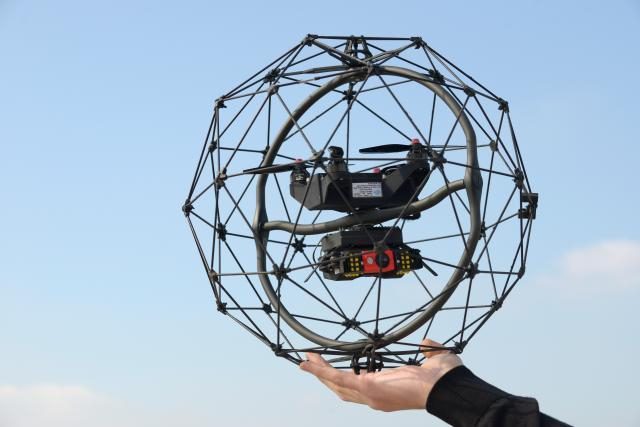Drone Strategy 2.0: The Future of Unmanned Aircraft in Europe


On Nov. 29, the European Commission published Drone Strategy 2.0 to establish the role of unmanned aircraft in commercial operations over the next decade. (Photo: Copyright European Union – Cristof Echard)
On Nov. 29, the European Commission published its Drone Strategy 2.0 to lay the foundation for how unmanned aircraft will be used in the commercial and regulatory sectors. As part of a larger mission to be carbon neutral by 2050, this strategy will help regulate drone usage so it supports a more digitized and sustainable Europe.
The European Commission’s Drone Leaders Group, which consists of General Aviation Manufacturers Association (GAMA) and other member companies, has looked at how drones should be regulated over the past few years. They published their final report in April, a report which became the basis for the recently released drone strategy.
Within this new drone strategy, the European Commission laid out how drones should be used in cargo and passenger operations. They also outlined performance-based and risk-based regulations as well as the skills development training needed to ensure drones are used properly. The framework is meant to ensure that drones are widely used—and regulated—by 2030.
The report draws from the current U-space regulatory framework and sets out the new Innovative Air Mobility (IAM) framework to regulate local and regional commercial air travel and the new Innovative Aerial Services (IAS) framework. IAS will regulate imaging, surveillance, mapping, and inspecting in European Union states, while IAM will focus more on the use of drones in commercial operations.
“Drones and IAM will become a part of the future urban and regional multimodal intelligent mobility ecosystem and the ground and air infrastructures enabling these transport services will be widely deployed and integrated,” said Kyle Martin, GAMA Vice President of European Affairs, in a recent press release.
The recently released report predicts that the drone sector could be valued at €14.5 billion by 2030 with over 145,000 new jobs created in the European Union over the next decade. Their vision also includes fully autonomous aircraft carriers in the commercial sector by 2030.
While the drones will have a positive impact on the economy, there are some environmental concerns around the increase in drone production. The report laid out production and recycling regulations, with the hope to decrease the environmental footprint when creating new drones and the noise pollution when they are in use.
The Drone 2.0 Strategy is confined within the European Union, but countries around the globe have started to work together to create drone regulations on an international scale. This time last year, regulators from the U.S. and EU gathered to discuss the successful integration of unmanned aircraft into civilian airspace.
When looking to the future of drones, Martin remarked, “GAMA will continue to work closely with the European Commission, EASA and Member States to make the strategy’s vision for 2030 a reality for EU citizens and businesses.”
The post Drone Strategy 2.0: The Future of Unmanned Aircraft in Europe appeared first on Avionics International.
—————
Boost Internet Speed–
Free Business Hosting–
Free Email Account–
Dropcatch–
Free Secure Email–
Secure Email–
Cheap VOIP Calls–
Free Hosting–
Boost Inflight Wifi–
Premium Domains–
Free Domains





